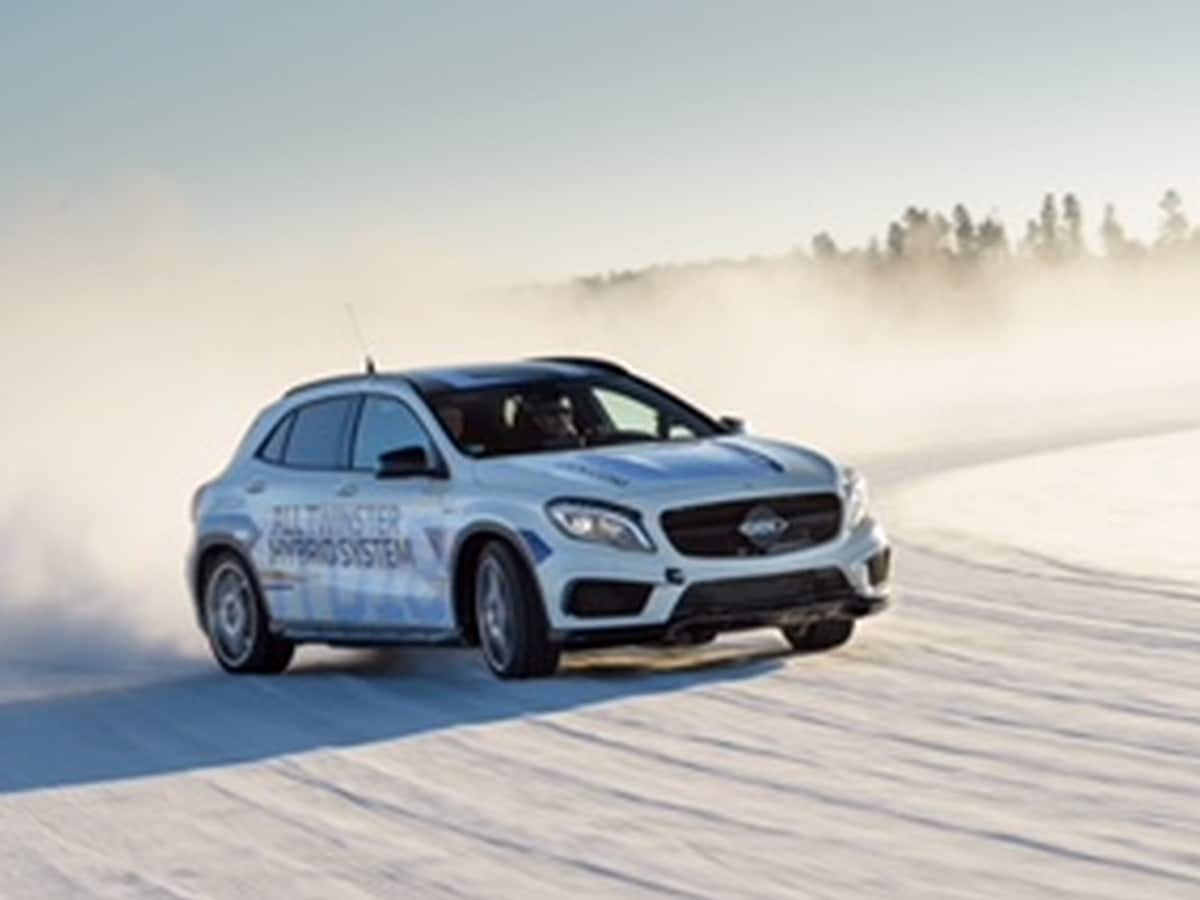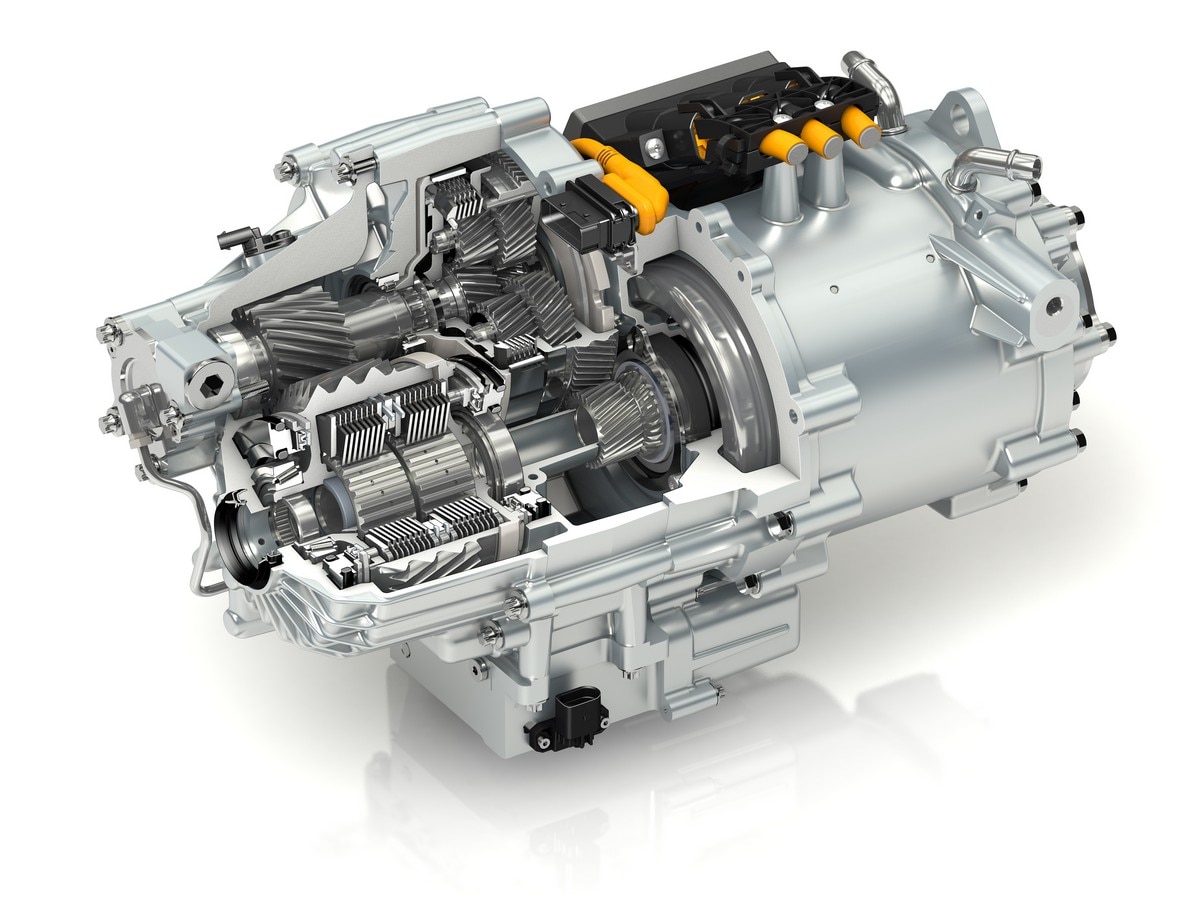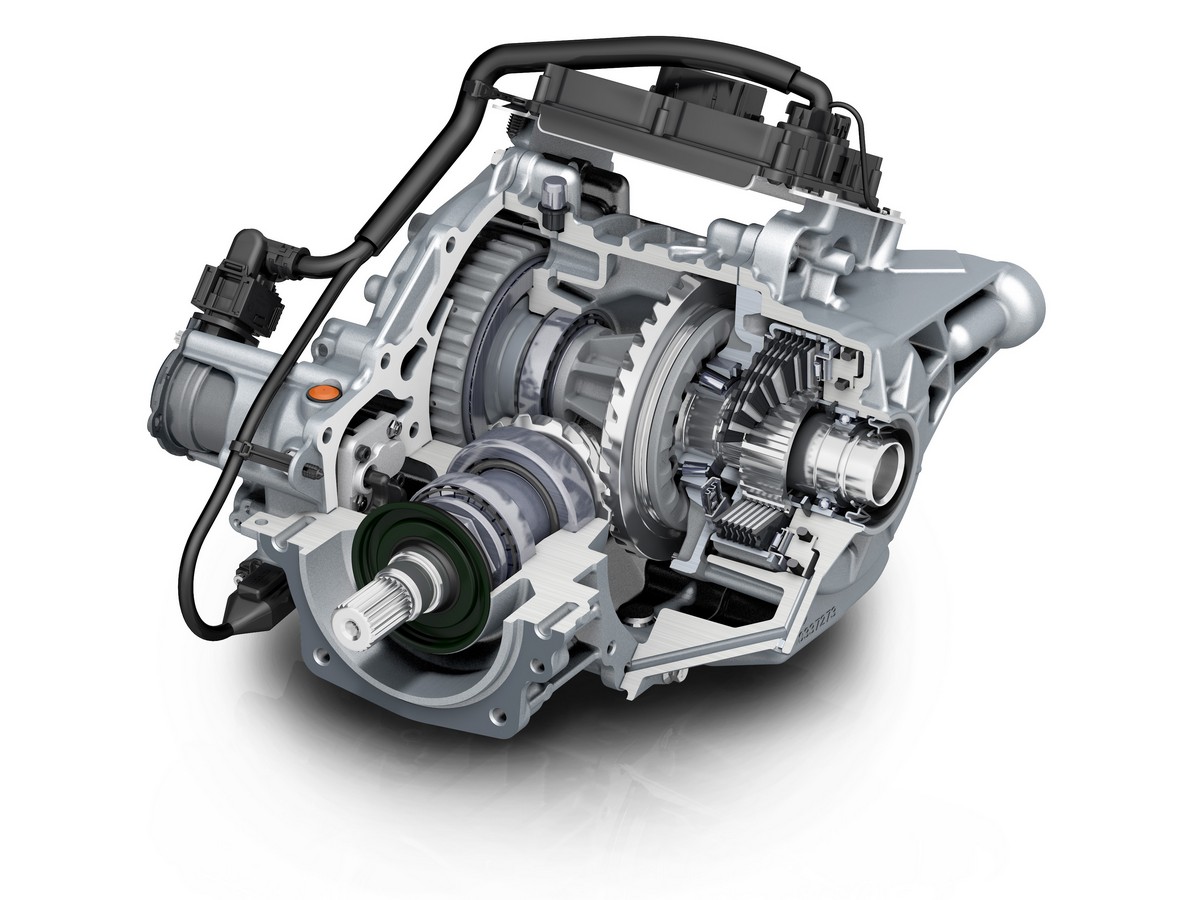What if you jacked up an AWD sport sedan and replaced its front differential with a torque-vectoring “Twinster” axle that can distribute engine torque in any proportion to the front wheels depending on driver demand and conditions? Then you replaced its driveshaft and rear differential with a torque-vectoring Twinster eAxle driven by a compact electric motor and added a battery pack and a charge port to power it. You would transform it into an even quicker plug-in gas/electric hybrid that would turn in and corner more quickly and with more stability, would excel in slick conditions, and would do it more efficiently. And it could operate in gas-powered front-drive, hybrid-powered all-wheel drive–with no front-to-rear mechanical connection–or in pure electric rear-drive mode.
GKN Driveline is demonstrating this potentially promising powertrain in a modified Mercedes-AMG GLA 45, with its turbocharged 4-cylinder delivering 375 horsepower and its rear motor an additional 161 horses. “A traditional FWD or AWD car has open differentials that split the torque and send it to the wheels,” GKN Driveline Senior Vice President of Engineering Ray Kuczera explains. “The Twinster technology replaces a conventional differential with two independently controlled clutch packs that decide where the torque goes. It looks at everything going on with the car, then decides where to send the torque to precisely control and hone the driving experience.”
The demonstrator car’s unique all-Twinster hybrid powertrain provides precise computer control of the distribution of torque to all four wheels. New electronic control units (ECUs) govern its dynamics with all hardware and software developed and calibrated by GKN engineers and integrated with the car’s remaining original systems to ensure that the rear electric drive operates in harmony with the engine and transmission in front.
Extra agility
The rear eTwinsterX (X meaning dual-ratio) system gives “an extraordinary level of agility,” the UK-based supplier contends, “with unprecedented all-wheel torque vectoring capabilities, including the capability to over-speed the outside wheel in a corner to induce a yaw moment, helping to bring the car into a tighter line when turning.”
It knows the wheel speeds, when one wheel is slipping and the other is not, the outside temperature and other conditions to decide where to send how much torque and can send it all to one wheel or apportion it from zero to 100 percent side-to-side. “It also understands driver intent,” Kuczera adds, “what the driver is doing with the steering wheel and accelerator to know what the driver is trying to do, then translates that intent and puts it to the road.”
The rear eTwinsterX’s two speeds allows it to remain in hybrid all-wheel drive anywhere from zero to maximum vehicle speed, Kuczera says. “While most eAxles have a single ratio, and have to disconnect above a certain speed to not over-drive the motor, this one can continue on to maximum speed. You can get an additional ratio for better take-off, or maybe an off-road creeper gear, in addition to the higher ratio for more efficiency.”
He adds that it shifts seamlessly between ratios and, when AWD is not needed, opens its clutches to decouple it from the motor. “The other thing that is very cool about this vehicle is what we call ‘sailing,’” he says. “If we open both front Twinster couplings to disconnect the mechanical driveline from the wheels, the engine doesn’t need to run, the transmission doesn’t spin, and we can drive the rear wheels on pure electric power.”
By comparison, Volvo’s T8 plug-in hybrid powertrain uses a single-speed GKN rear eAxle with a conventional differential to deliver on-demand AWD but disconnects above 60 mph, according to Kuczera. “We have built demonstration vehicles with a single-speed Twinster, and they are fantastic,” he says. “The main difference here is the two-speed twin-clutch coupling that uses a much higher-performance electric motor.”
Wider application
He points out that GKN’s Twinster technology began as an “intelligently controlled” mechanical product and is now also being applied to eAxle products. “And this technology demonstrator takes what we have learned from doing the Volvo and other vehicles and elevates it to the next level to get the ultimate in performance and efficiency.”
Among the many production vehicles currently using GKN mechanical Twinster axles are the Ford Focus RS, Lincoln Continental and MKZ, Cadillac XT5, Buick LaCrosse and Envision, Range Rover Evoque and Land Rover Discovery Sport. The only one now using a 2-speed eAxle (in front) is BMW’s exotic i8 plug-in hybrid sports car. But that is not a dual-clutch electric eTwinsterX, which is not yet in production.
“GKN is very excited about this Twinster technology,” Kuczera said. “It’s amazing how it can be used to make a vehicle both more dynamic and safer. The torque vectoring, sending a specific amount of torque to a certain wheel, gives you dramatically different handling feel in corners. You can send a large portion of the torque to the outside rear wheel in a tight turn to power out of the turn better, so there is actual performance improvement. And it’s not a one-trick pony. You can have off-road traction and on-road dynamics in one package, and it can be used for such safety features as yaw damping and lane keeping.”
He contends that the cost differential for a Twinster torque-vectoring axle over a conventional system is incremental, though it does add a hydraulic power pack, clutches and control software in place of simple mechanical parts. “But I think once someone drives a vehicle with Twinster technology, he or she would be inclined to pay the extra cost,” Kuczera said.
As for the demonstration car’s unique combination of front mechanical and rear two-speed electric Twinster axles, that full system would add substantial cost. So, don’t expect to see it in low-end vehicles any time soon. “It would be awesome in a race or rally car,” Kuczera enthuses, “but no one is using it yet.”











